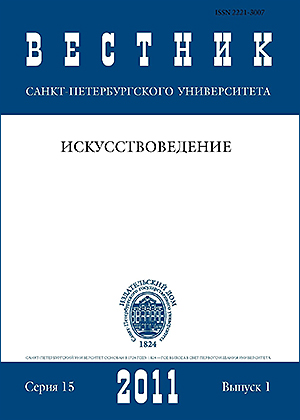The Cyborg as a Creation of Art (on the problem of human extension)
Abstract
The human beings have always been dreaming about their physical and psychical extensions. While the scientists are worried about eliminating the human’s physical drawbacks, replacing organs by artificial details, which embody and sometimes even exceed human’s possibilities, the artists are mainly concerned with the artistic side of this process. As a result of interaction between human beings and machines it is sometimes difficult to identify the source of fantasy: is it in the artist’s technologic mind or in spiritualized computer’s “brain”.
Keywords:
cyborg, the extensions of man, virtual reality, art of new technologies
Downloads
References
References
Downloads
Published
How to Cite
Issue
Section
License
Articles of "Vestnik of Saint Petersburg University. Arts" are open access distributed under the terms of the License Agreement with Saint Petersburg State University, which permits to the authors unrestricted distribution and self-archiving free of charge.






